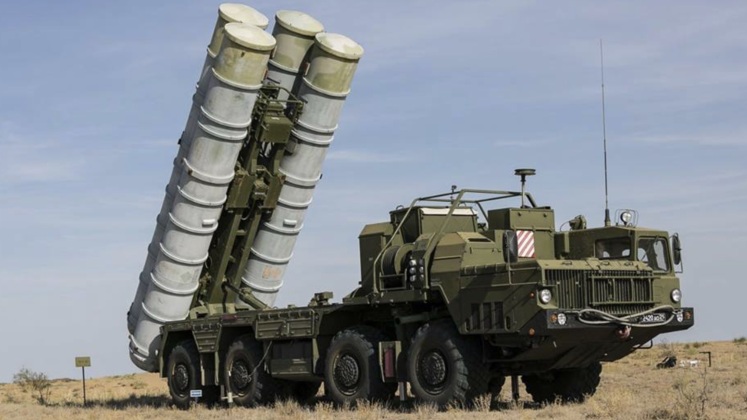News
F-35’s ‘Electronic Spectrum Duels’ with Russian Air Defences in Ukraine Raised to Make Case For Singaporean Acquisitions
Singaporean Minister of Defence Ng Eng Hen has announced that F-35 fifth generation fighters have been actively engaged in missions in the Ukrainian theatre, and were deployed to pinpoint the locations of Russian air defence systems. “In recent activities, the United States has mobilised its F-35s to identify the deployment of Russian anti-aircraft missile systems within Ukraine. The gathered intelligence is subsequently disseminated to NATO countries,” he stated at a session of the Parliamentary Committee on Public Procurement. His statement follows the announcement on February 28 that Singapore would make its first acquisitions of F-35A fighters, following prior orders for 12 F-35Bs to modernise its fleet. This was quickly followed by a response from a Pentagon spokesman, who declined to comment on the statement, asserting: “It’s not my place to speak for Singapore’s MOD [Ministry of Defence] or try to clarify his comments.” “I can confirm that the U.S. does not fly F-35s in Ukraine,” he added.

Minister Ng’s statement notably did not imply that F-35s were deploying in Ukrainian airspace, with the range of the aircraft’s sensors allowing it to operate as described from well outside the country. The Pentagon spokesman’s refutation thus did not address the issue raised by the Defence Minister, but simply how it may have been misinterpreted. F-35s were forward deployed to Germany’s Spangdahlem Air Base from February 16, 2022 shortly before hostilities in Ukraine broke out, with the U.S. Air Force 388th Fighter Wing and the Air Force Reserve’s 419th Fighter Wing being the first to arrive in the theatre. The aircraft were deployed with a primary mission of collecting electronic data on Russian positions and in particular its surface to air missile assets. The fighters are optimal assets for such missions due to their unique avionics, particular their sensors and electronic intelligence capabilities, with the aircraft having been designed with strike missiles and suppression of air defences as a primary focus rather than air to air combat.
Regarding operations in Eastern Europe, commander of the 388th Fighter Wing Colonel Craig Andrle elaborated in an interview in early 2023: “We weren’t crossing the border. We’re not shooting anything or dropping anything. But the jet is always sensing, gathering information. And it was doing that very, very well… We had all hoped it was going to work like it’s supposed to, but then to see it actually perform very, very well in that role was great.” He added that the F-35s faced challenges when encountering Russian long range air defence systems, noting: “We’re looking at an SA-20. I know it’s an SA-20. Intel says there’s an SA-20 there, but now my jet doesn’t ID it as such, because that SA-20 is operating, potentially, in a war reserve mode that we haven’t seen before.” The SA-20 is a NATO reporting name for advanced variants of the S-300 air defence system, namely the S-300PM-1 and PM-2.

388th Operations Group Commander Colonel Brad Bashore observed regarding operations to collect information on Russian air defence systems: “We don’t have a ton of weapons where we can decimate the entire space. We’re sharing data and making sure that everybody has awareness — surface-to-air and air-to-air — of what’s out there in the environment.” He added: “They’re doing the same thing that we’re doing. We just looked at each other… No direct interaction and nothing that was unprofessional on either side.” Operations against Russian air defence systems represent the closest the F-35 had come to operations in a high intensity war zone, even if only for electronic surveillance purposes, which thus made these deployments valuable to highlight by the Singaporean Defence Minister when he sought to defend the decision to acquire the aircraft.
The raising of the F-35’s record of deployments against Russian air defence assets was particularly important due to the significant controversies surrounding the fighter class, which even in the United States suffers from some of the poorest availability rates in the fleet as well as approximately 800 performance defects, and which due to significant overruns in its production and operational costs will force the Singaporean Defence Ministry to make major cuts to accommodate. It remains uncertain to what extent the F-35’s wartime operational record in the Ukrainian theatre, such as it is, may have influenced Singapore’s decision to invest more heavily in the program, or what intelligence on these operations was provided to the country by the United States.












